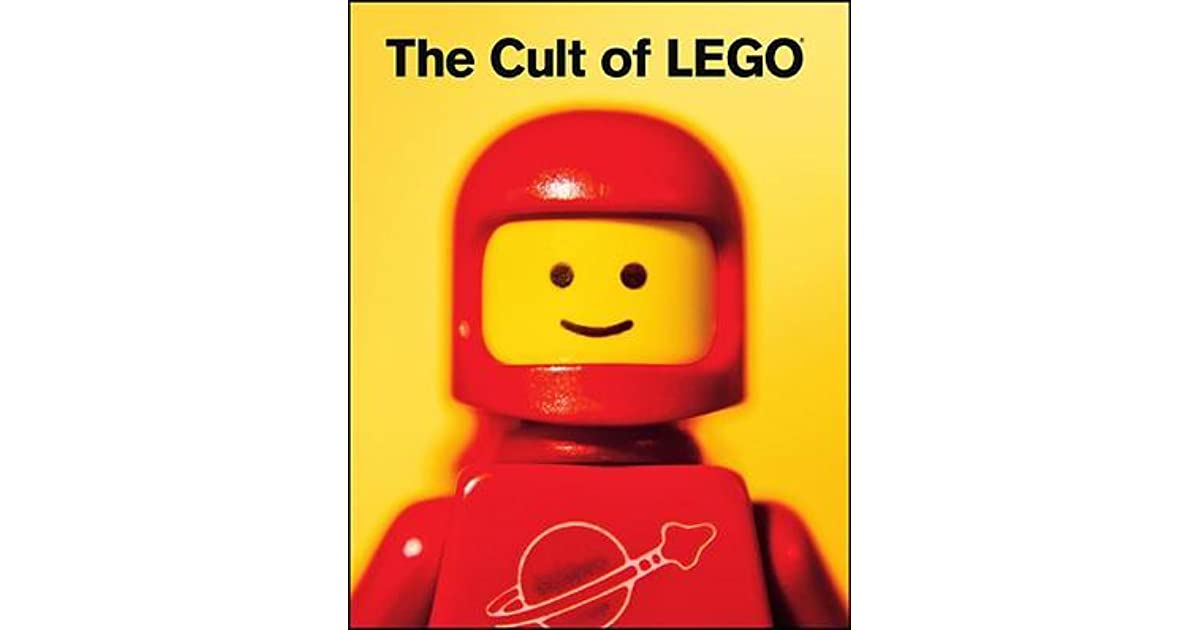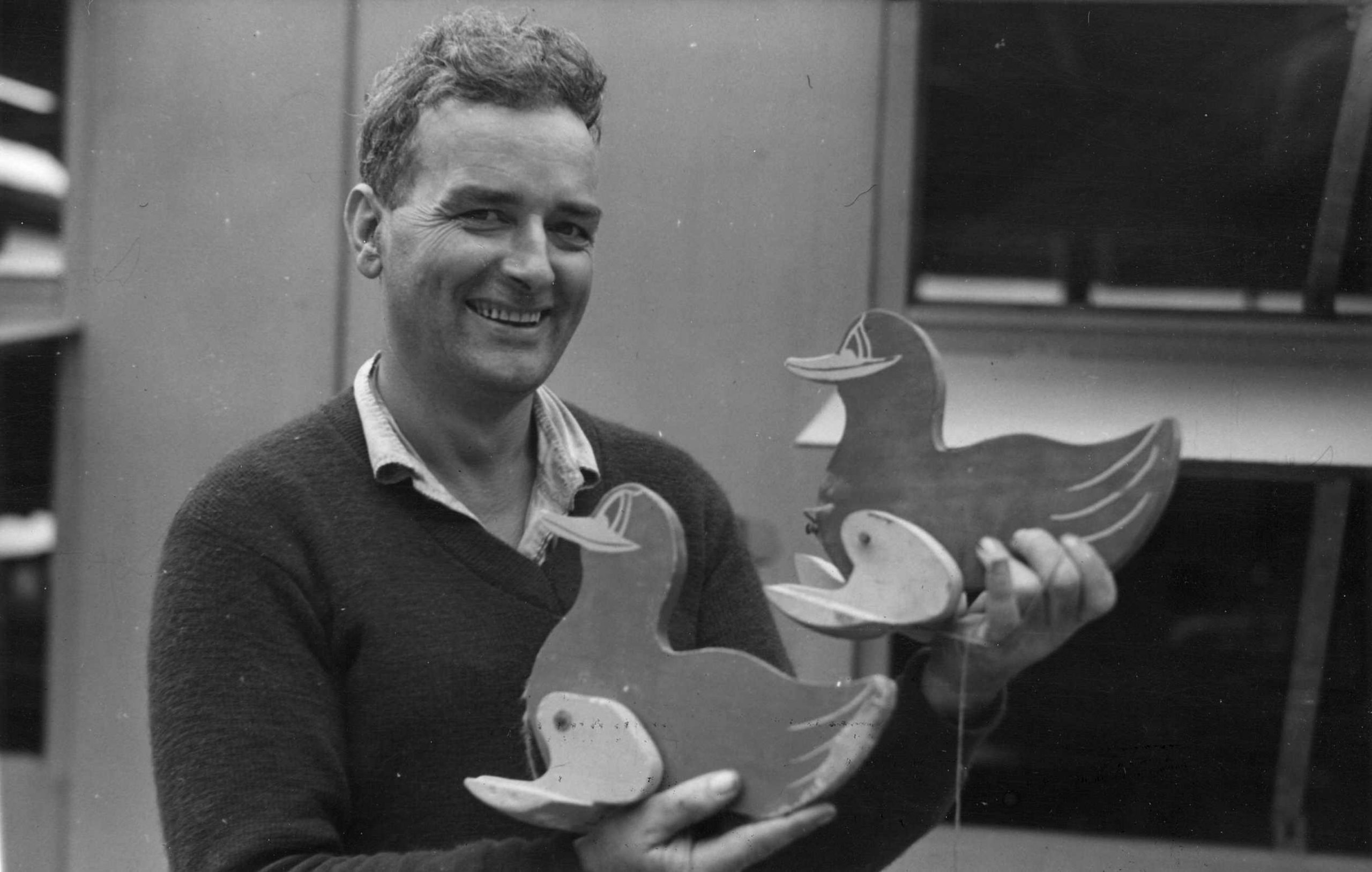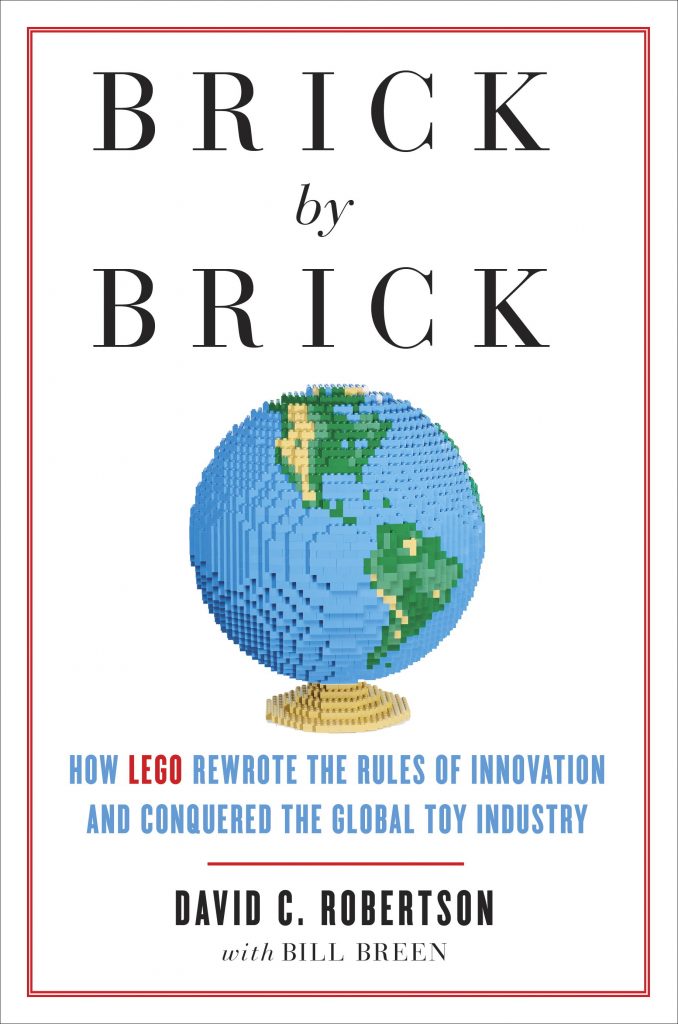‘It’s LEGO’s world. You just live in it.’ (Mark Frauenfelder, Institute for the Future) 1
The LEGO® Group was founded in 1932 by Ole Kirk Christiansen, a carpenter whose primary business of producing household goods had suffered due to the Great Depression. Initially producing wooden toys, the company later developed a system of interlocking bricks. Manufacturing of plastic LEGO bricks began in Denmark in 1949,2 and has since grown to include factories throughout the world.

The cult of LEGO by John Baichtal & Joe Meno
The birthplace of LEGO toys is the Danish village of Billund, and it has remained the company’s heartland ever since. In 2007, only 6,000 people were living in Billund, and yet Billund Airport is still the second busiest airport in the country. That is no wonder considering how popular the never-ageing LEGO brand is! There are 80 LEGO bricks for every person on Earth; there are more than 900,000 YouTube videos featuring LEGO toys, and architects all over the world use LEGO bricks to conceptualize structural models.
 Colourful toy LEGO bricks. Photo used with permission. ©2021 The LEGO Group
Colourful toy LEGO bricks. Photo used with permission. ©2021 The LEGO Group
The LEGO Group’s first hit was a duck pull toy introduced in 1935 that proved so popular that the duck has endured as a symbol of the company’s genesis ever since.
 Man displaying wooden duck pull toys [ca 1945]; H99.201/1305
Man displaying wooden duck pull toys [ca 1945]; H99.201/1305
The growing popularity took LEGO toys to another level and now they have eight amusement parks around the world, known as LEGOLANDS. Each park features large-scale LEGO models of famous landmarks and miniature LEGO models of famous cities, along with LEGO-themed rides.
The first LEGOLAND park was built in the LEGO Group’s hometown of Billund in Denmark in 1968 and still pulls 1.5 million visitors a year. This was followed by LEGOLAND Windsor in England, LEGOLAND California in Carlsbad, US and LEGOLAND Deutschland in Günzburg, Germany. 3
 Brick by brick : how LEGO rewrote the rules of innovation and conquered the global toy industry by David C. Robertson with Bill Breen
Brick by brick : how LEGO rewrote the rules of innovation and conquered the global toy industry by David C. Robertson with Bill Breen
In 1998, LEGO toys were among the first to be inducted into the Strong Museum’s National Toy Hall of Fame, and in 2000, the LEGO brick was chosen as the Toy of the Century, by both Fortune magazine and the British Association of Toy Retailers. It beat the famous teddy bear and Barbie!4
Being so popular, the LEGO Group went for the Guinness World Records not once, but several times. It always won. Here are some examples:
- Tallest tower, Sao Paulo, Brazil – 102 feet 3 inches
- Longest train track, Pacific Northwest Lego Train Club – 3,343 feet (more than 1 km!)
- Tallest crane – 20 feet into the air
- Biggest car, Chicago – life size
- Biggest statue, Sitting Bull – 25 feet tall
 Children play with colourful LEGO bricks. Photo used with permission. ©2021 The LEGO Group
Children play with colourful LEGO bricks. Photo used with permission. ©2021 The LEGO Group
LEGO® fun facts 5
- LEGO bricks haven’t changed over the years. A Lego brick from 1956 fits on a LEGO brick made today
- The largest LEGO set ever sold is the LEGO Taj Mahal, with 5,922 pieces
- The name ‘LEGO’ is a combination of the two Danish words ‘leg godt,’ meaning ‘play well.’ And is incidentally also a Latin word meaning ‘I put together’
- The LEGO toy came to Australia in 1962
- The LEGO minifigure, also known as ‘minifig’ or just ‘fig,’ was first introduced in 1978. The early figures before this, in 1975, had no facial features, gender, arms, or moveable legs
- The first minifig was a police officer
- The first female minifig was a nurse
- There are a lot of minifigs of well know people like writers, artists, sportsmen, politicians etc
- LEGO minifigures are the world’s largest population, with over 4 billion of them around the world
 LEGO children minifigures. Photo used with permission. ©2021 The LEGO Group
LEGO children minifigures. Photo used with permission. ©2021 The LEGO Group
You can build anything you can think of using LEGO bricks. It doesn’t always need to be something from the real world or something that can actually function. Some builders draw inspiration from movies, dreams or simply conversations. With LEGO toys, the sky’s the limit! 😊
 Colourful LEGO bricks of different shapes & sizes. Photo used with permission. ©2021 The LEGO Group
Colourful LEGO bricks of different shapes & sizes. Photo used with permission. ©2021 The LEGO Group
Join us for a whole series of events celebrating the LEGO® brick this summer! Discover the State Library Bricktoria program and book your tickets today.
References
- Baichtal, J & Meno, J, 2011, The Cult of LEGO, No Starch Press, San Francisco
- The Lego Group, viewed 19 November 2021,<https://www.lego.com/en-us/history/articles/c-automatic-binding-bricks>
- Robertson, D & Breen, B, [2013], Brick by Brick: how LEGO rewrote the rules of innovation and conquered the global toy industry, Crown Business, New York
- Wolf, M (ed), 2014, LEGO studies : examining the building blocks of a transmedial phenomenon, Routledge, Taylor & Francis Group, 2014
- KidsKonnect, December 15, 2016, LEGO Facts & Worksheets, viewed 19 November 2021,<https://kidskonnect.com/fun/lego/>


Thank you for the interesting article!it’s great!Long Live Lego!
Thank you! I’m very happy you liked it.
Thanks for the great article. Just a heads up that the two wooden ducks being held by the man were not made by Lego. Below is a link to a pic of both the handpainted (1948) and spray painted (1953) versions from my collection, you’re welcome to use the pics.
Dear Matthew,
I am glad you like my article. I know the picture I used is not a representation of the LEGO wooden ducks, but a picture from our collections as we use these blogs as a way of promoting the collections as well. Thank you for the pictures, they are indeed beautiful.
Kind regards,
Ana
Great article! Lego is so cool